Seeing we still had to sort out some administrative stuff for the truck, we left the Belville workshop in the last week of October, sorted out (part of) our stuff near Somerset West and headed towards the Whale Coast., part of the greater Cape Floral World Heritage Site.
Leaving Gordon’s Bay towards Betties Bay, we saw a lonely dolphin in the bay below, but unfortunately quite far away. We stopped for a while and scanned the ocean in the hope of seeing a whale, but we were out of luck.
After a few lookout stops along the very scenic ocean drive (in our opinion definitely as nice if not nicer than the Chapmans Peak drive) we arrived at whale capital Hermanus! Unfortunately here too, the whales were not out to play and nowhere to be seen from any of the lookout points. We took a stroll through town with its quirky nooks, crannies, art and musea and enjoyed a mussel lunch on one of the terraces in the sun. Yummie!
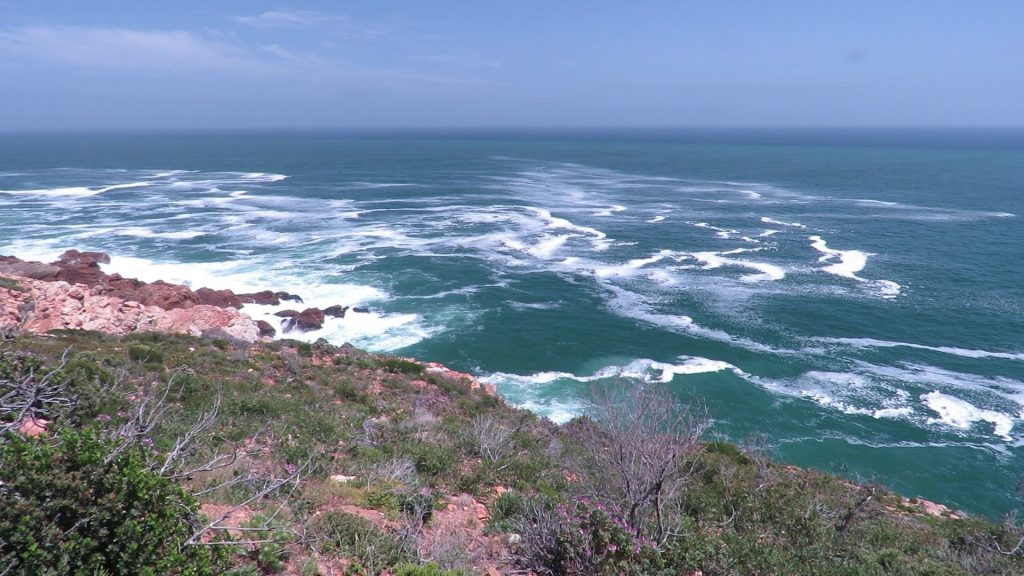
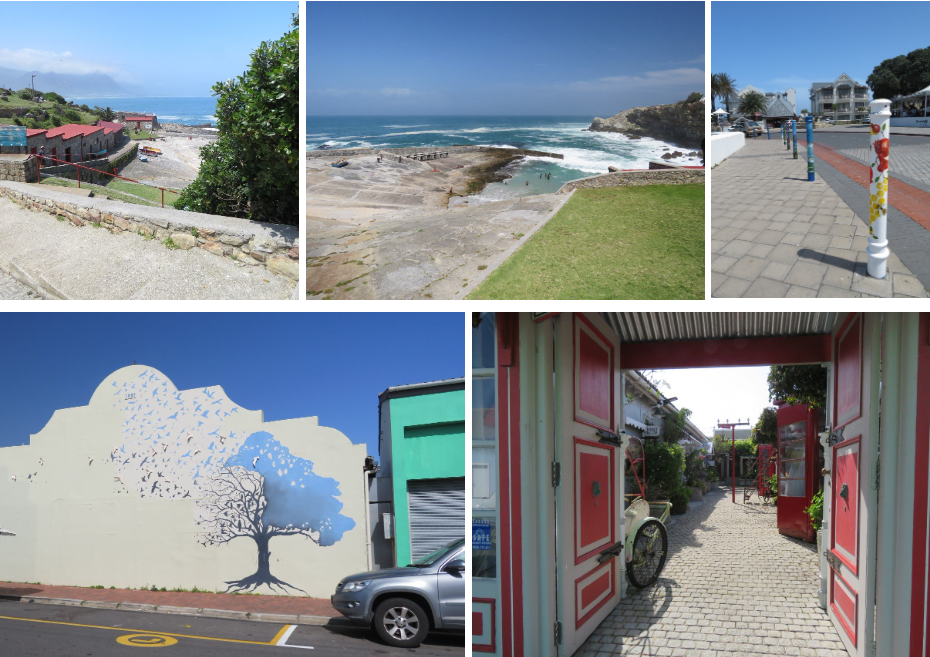
After lunch we continued to Gansbaai and found a beautiful spot for the night in a dilapidated and abandoned development overlooking the bay. On two occasions however we got security knocking on our door, to ensure we were ok and safe. After the second team again voiced their concerns regarding the close vicinity of the informal settlement, we decided to follow their advice, moved on and eventually camped at the local police station.
Next morning we continued along the coast still hoping to see whales. We took a leisurely drive along the rugged coastline to Danger Point lighthouse, but unfortunately it was closed due to Covid19. The weather remained foul and we only made a short stop at Pearly Beach before continuing to find a spot for the night.
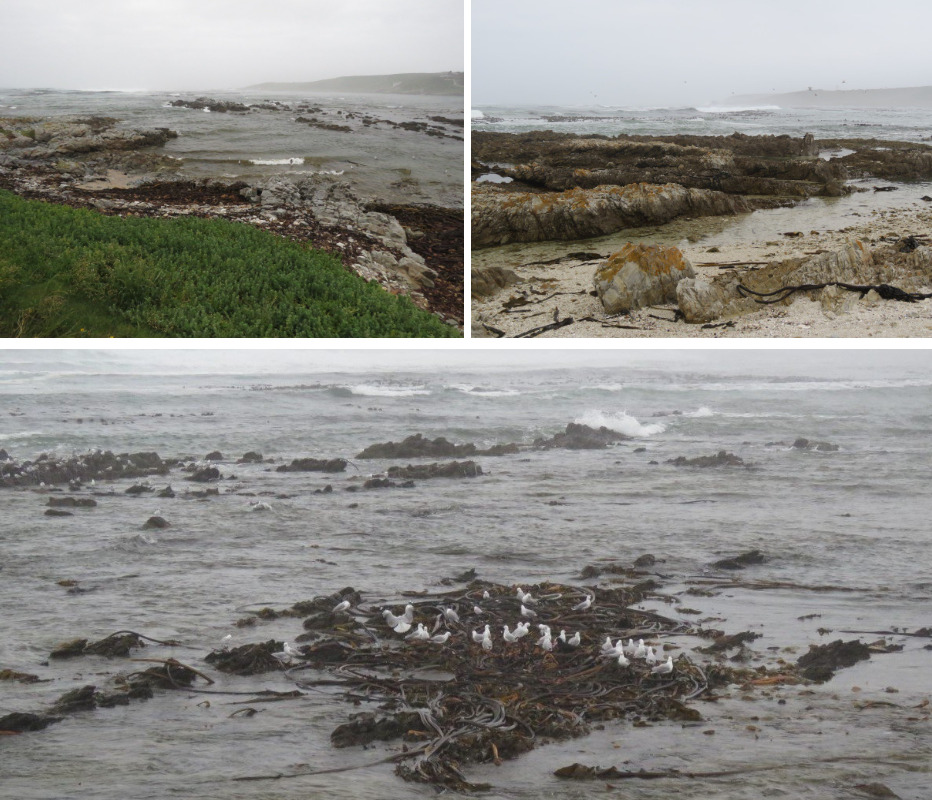
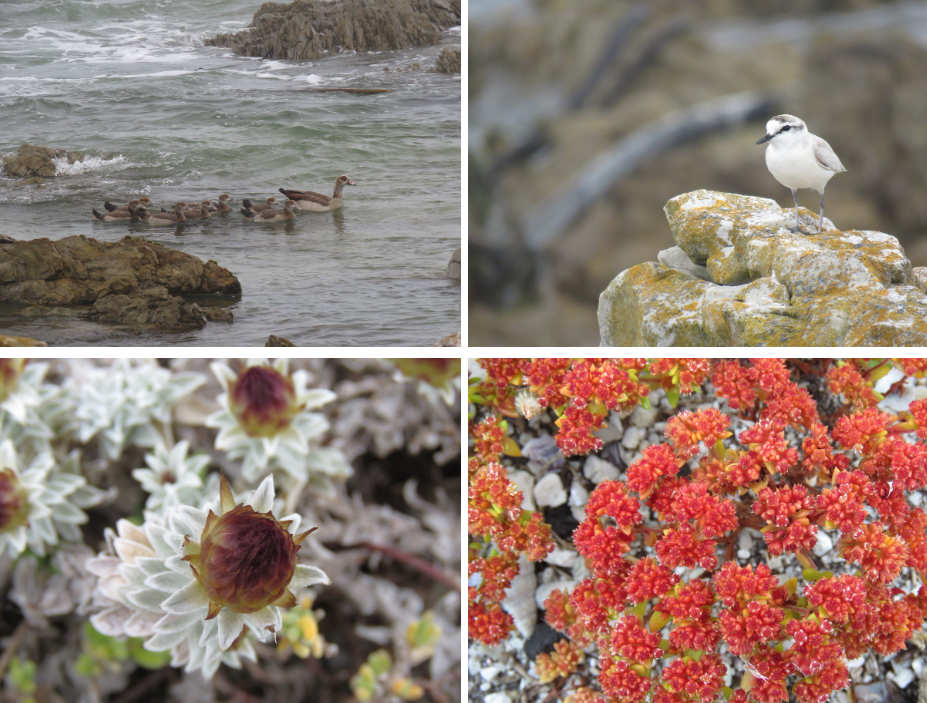
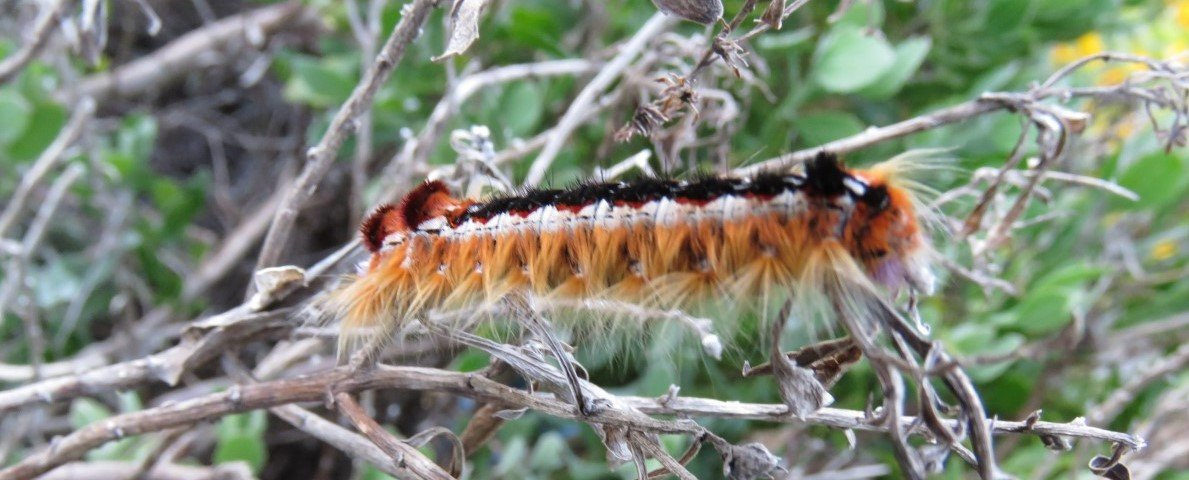
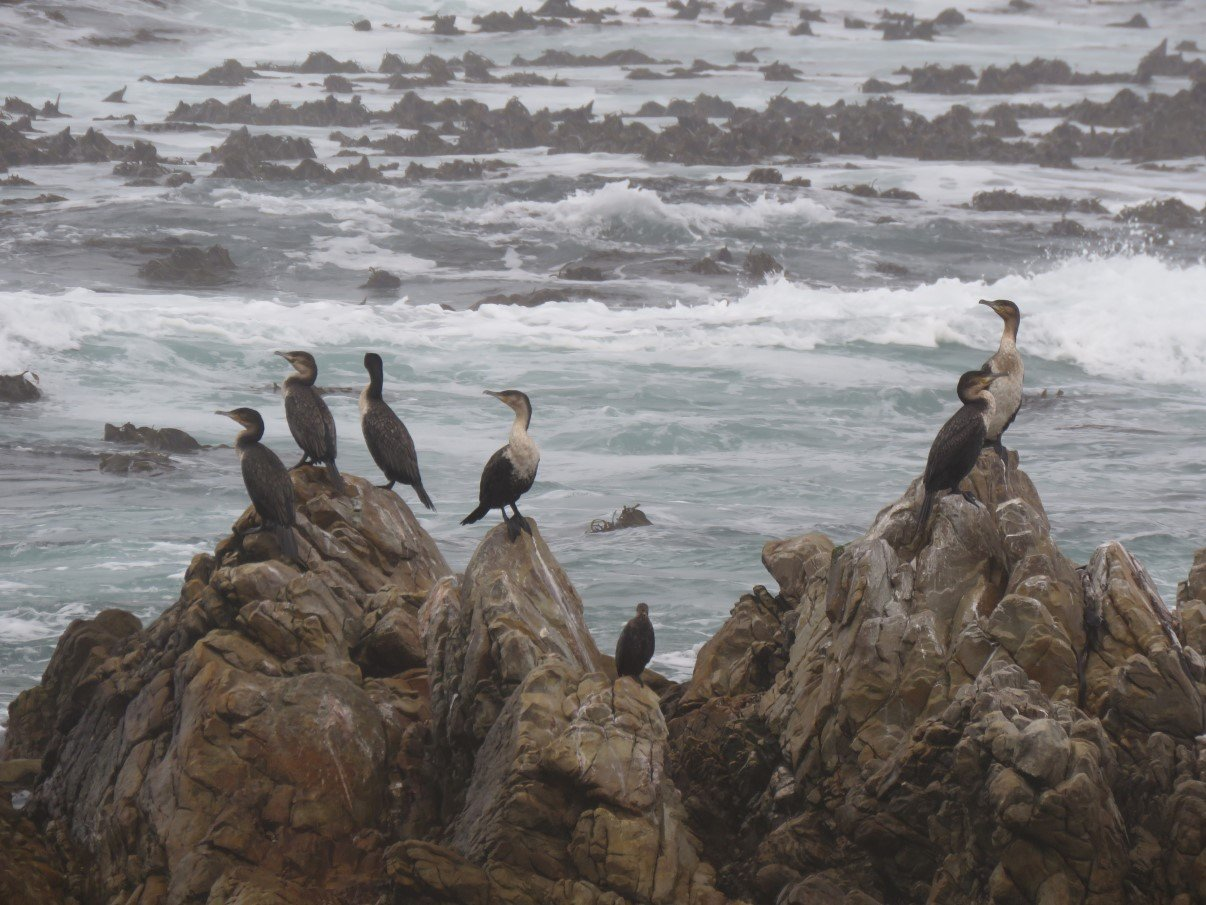
We eventually parked Trokkie in a small layby close to Die Dam just meters away from the beach. We got out and went for a long (still windy) walk on the beach. The weather was dark and stormy and later on we retreated to the comfort of our house on wheels.
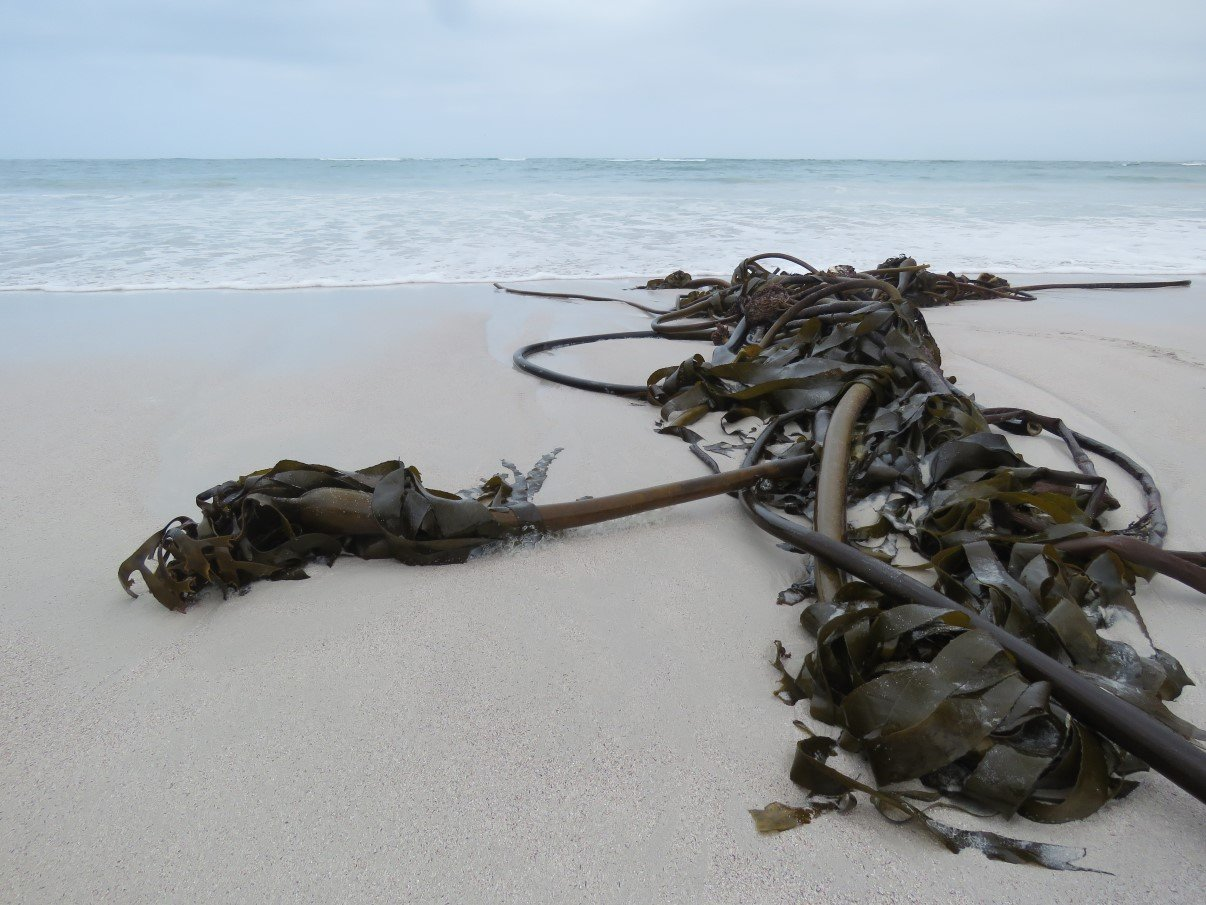
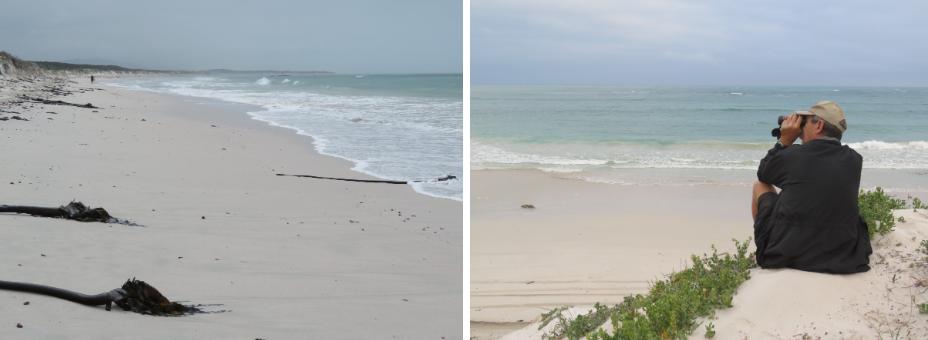
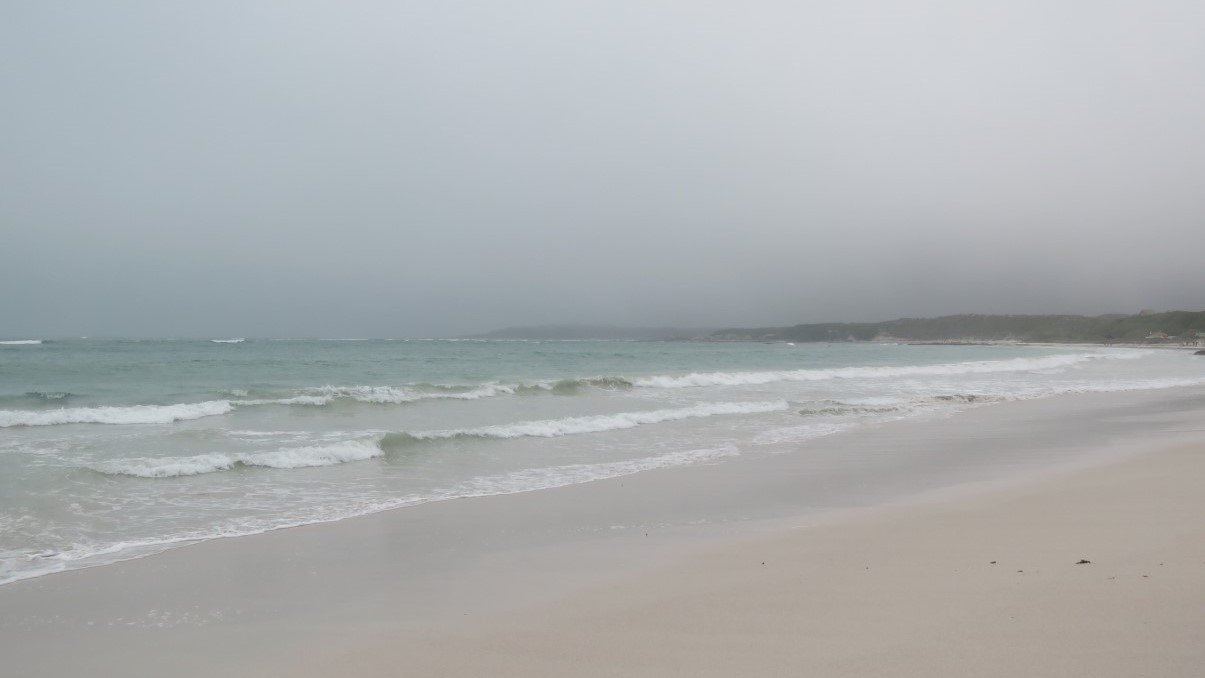
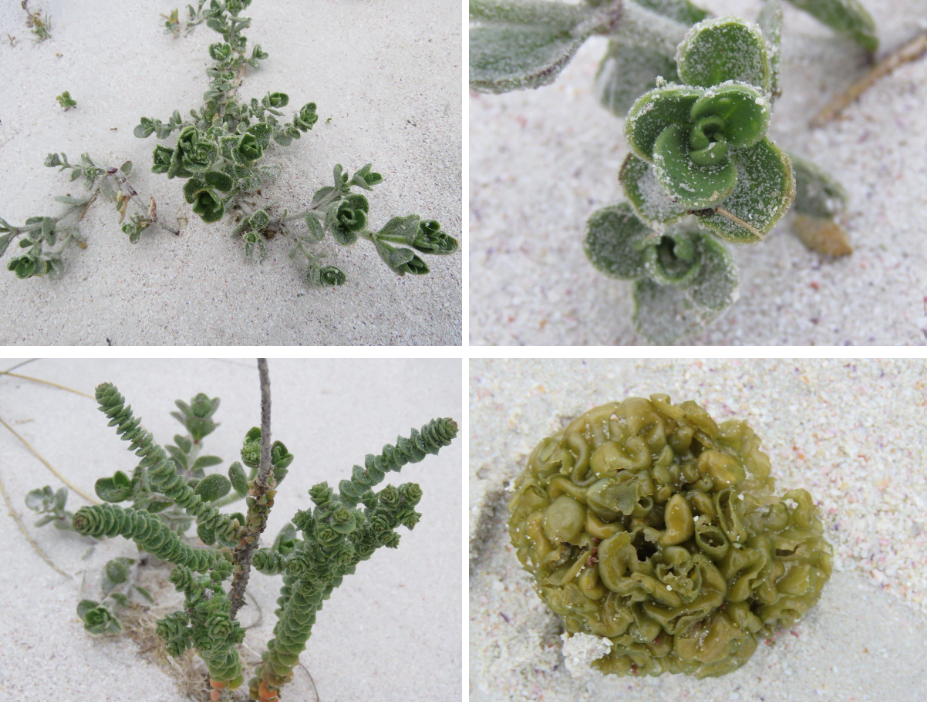
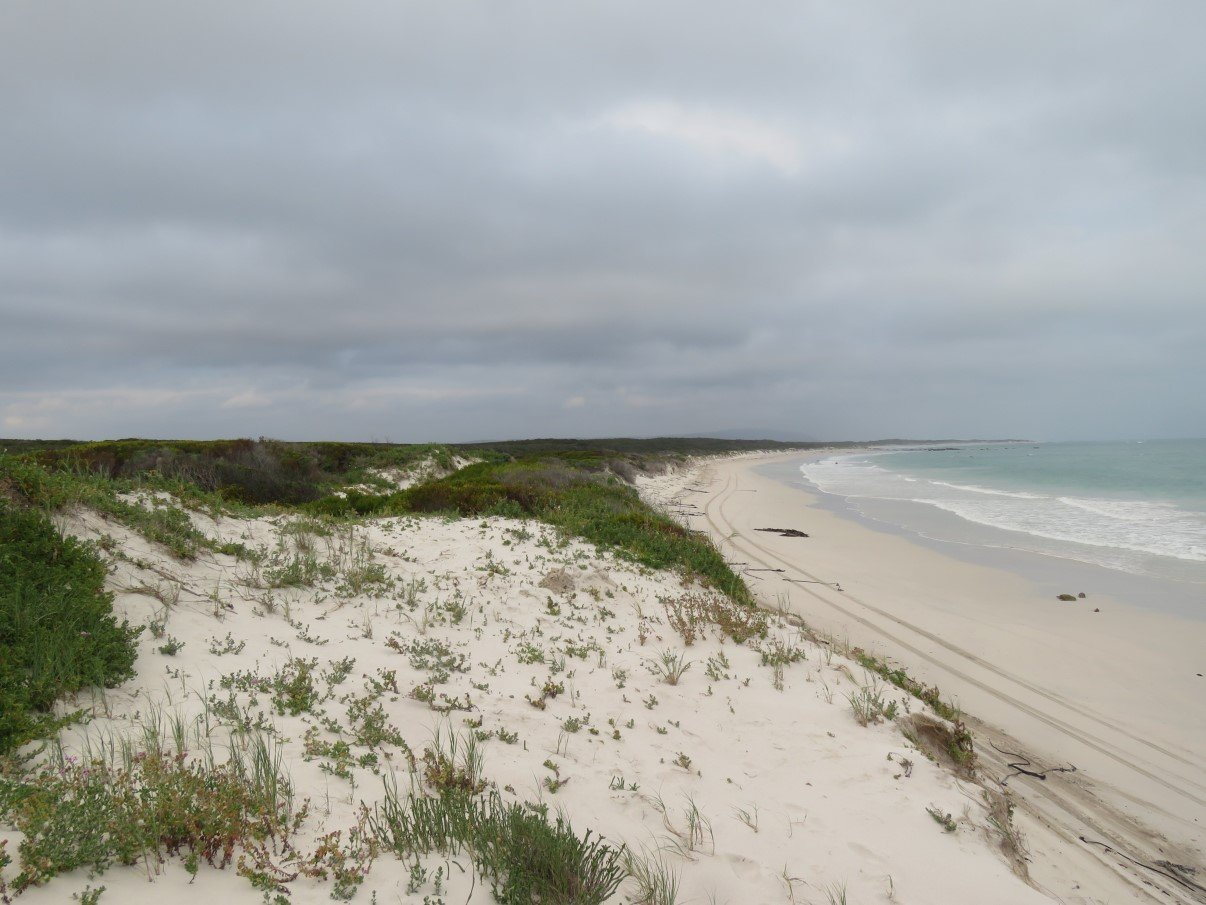
After a bit of research we decided that- seeing that we didn’t really see a whale so far– we might as well spoil ourselves with a boat trip to see if we might see them when further away from the coast. After a few whatsapps we booked our place for 2 days later, so we decided to push along towards Agulhas in the morning and only afterwards return to Gansbaai for the whale trip.
We had last been at Cape Agulhas when our children were about 5 or 6 (which would make it about 30 years ago) and with us revisiting, we wanted to show that Trokkie too had been on the most southern point of the African continent.
Although the little stone monument and plaque are still the same, a big artwork/sculpture to celebrate Cape L’Agulhas as the Southernmost Point of Africa has been added just a short walk away. It’s a steel and concrete 3-dimensional map of Africa and made such that people can walk on it. It’s beautiful!
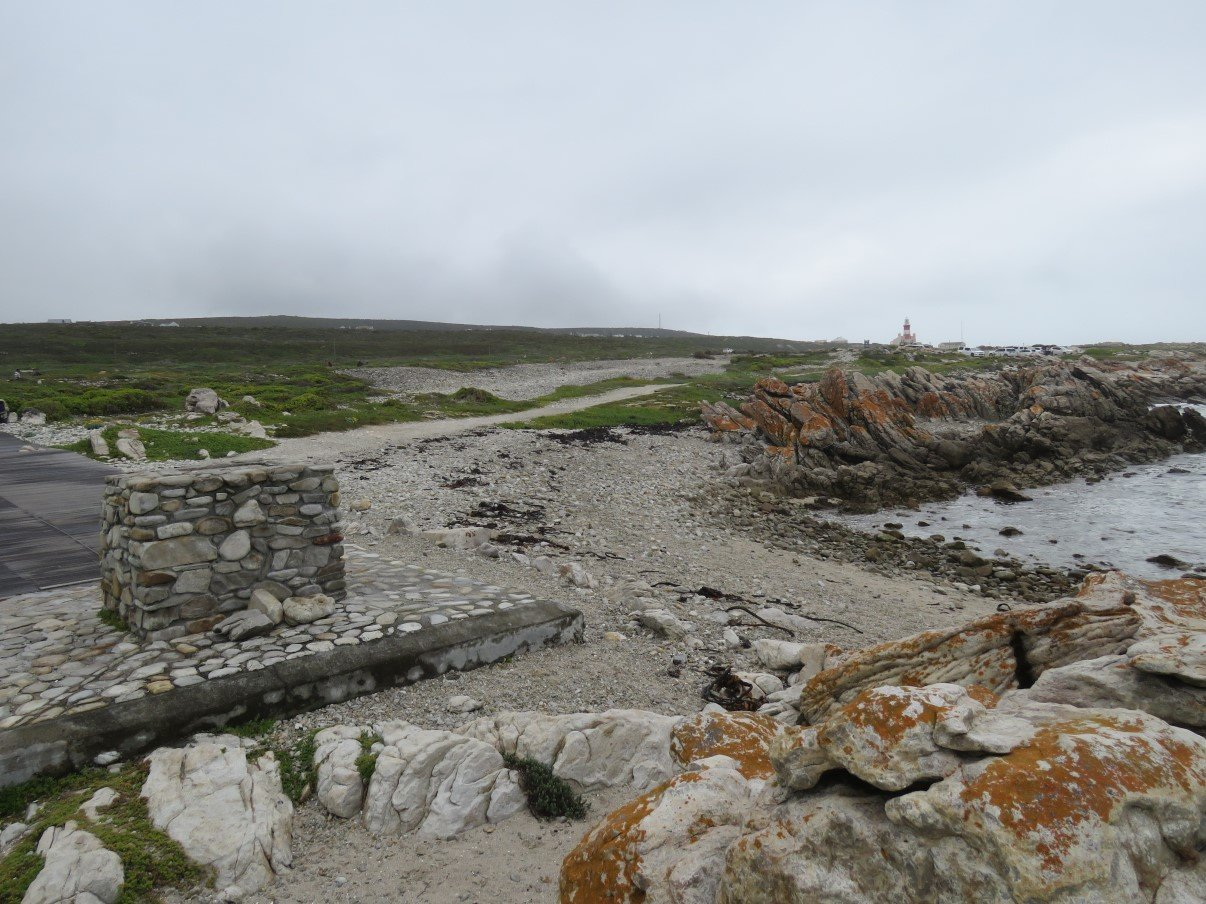
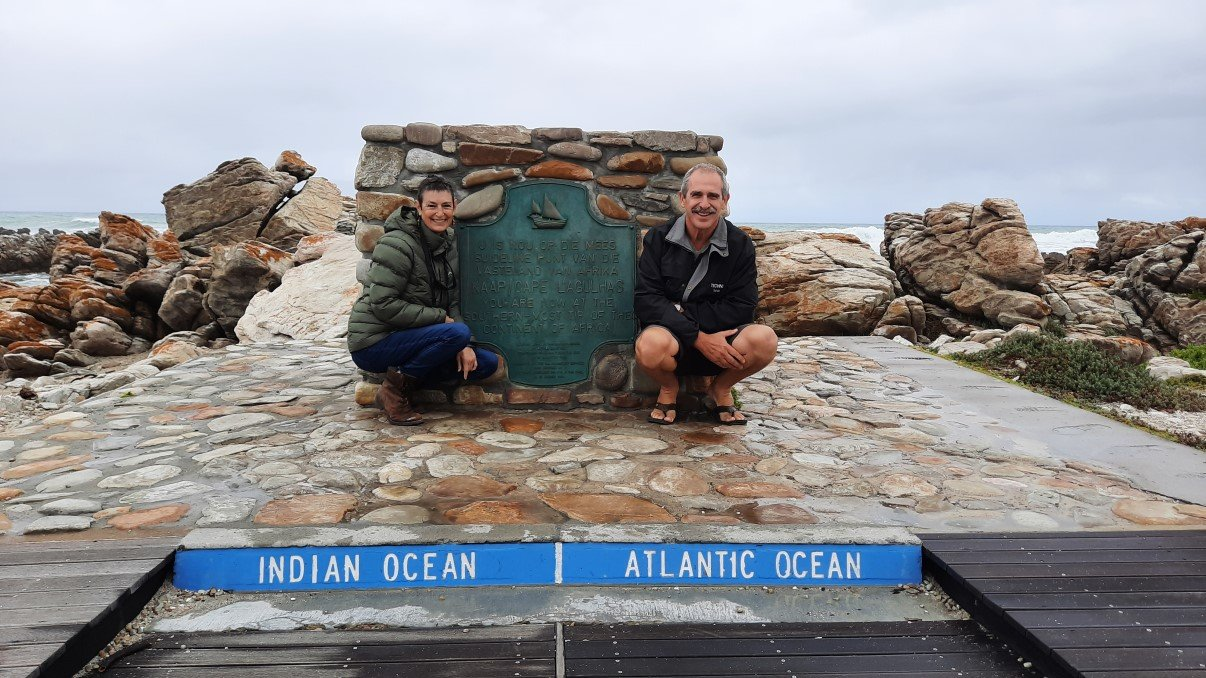
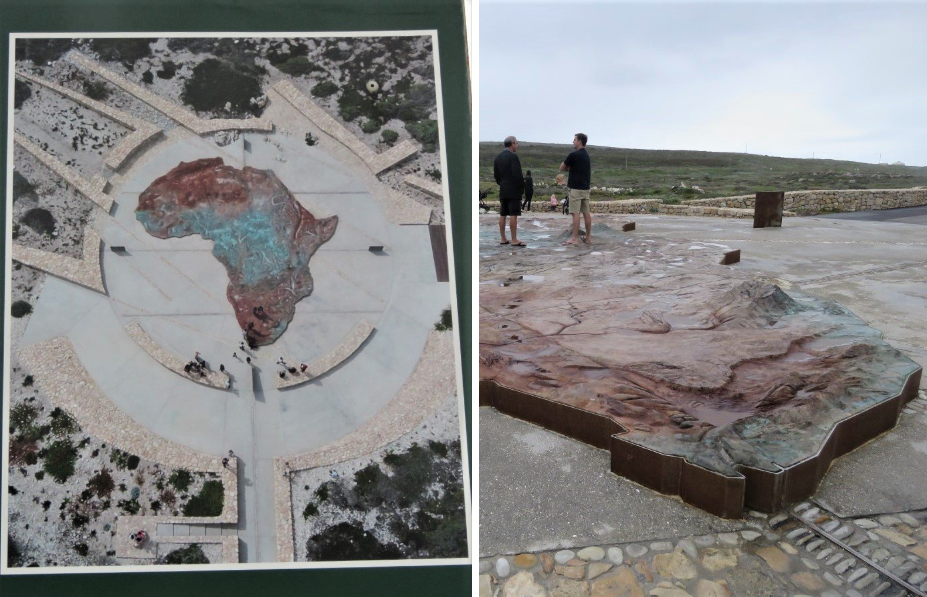
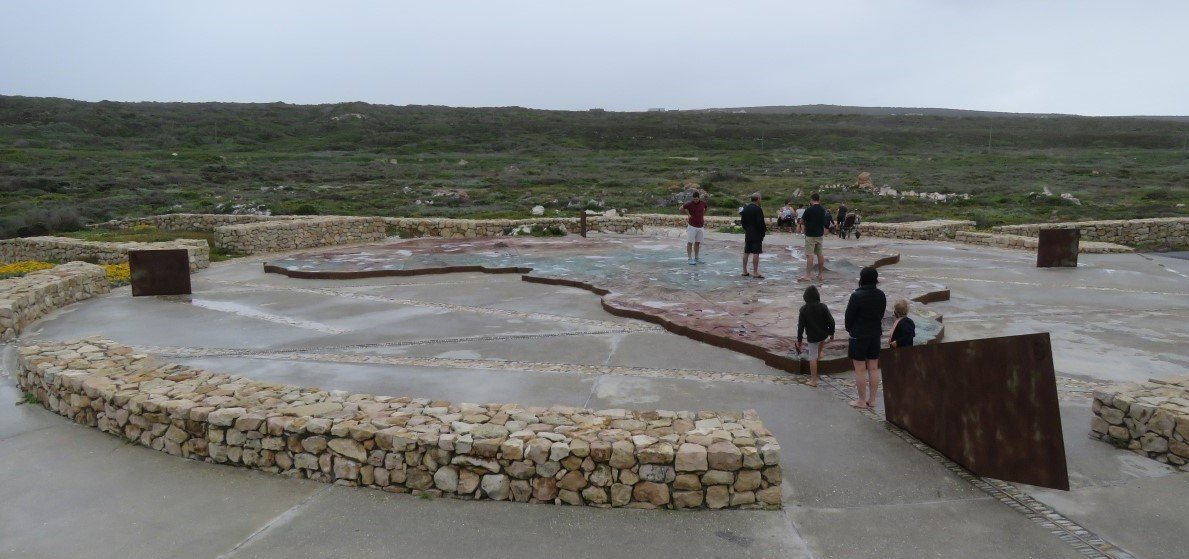
This coastline here is treacherous and there are more than 140 wrecks on this part of the coast. We walked a bit further on the coastal path past the monument to the wreck of the Meisho Maru 38. Looking at the relentless beating of the waves onto the rocks, one can only imagine how a ship would have to admit defeat if caught in a storm that would throw it on the rocks.
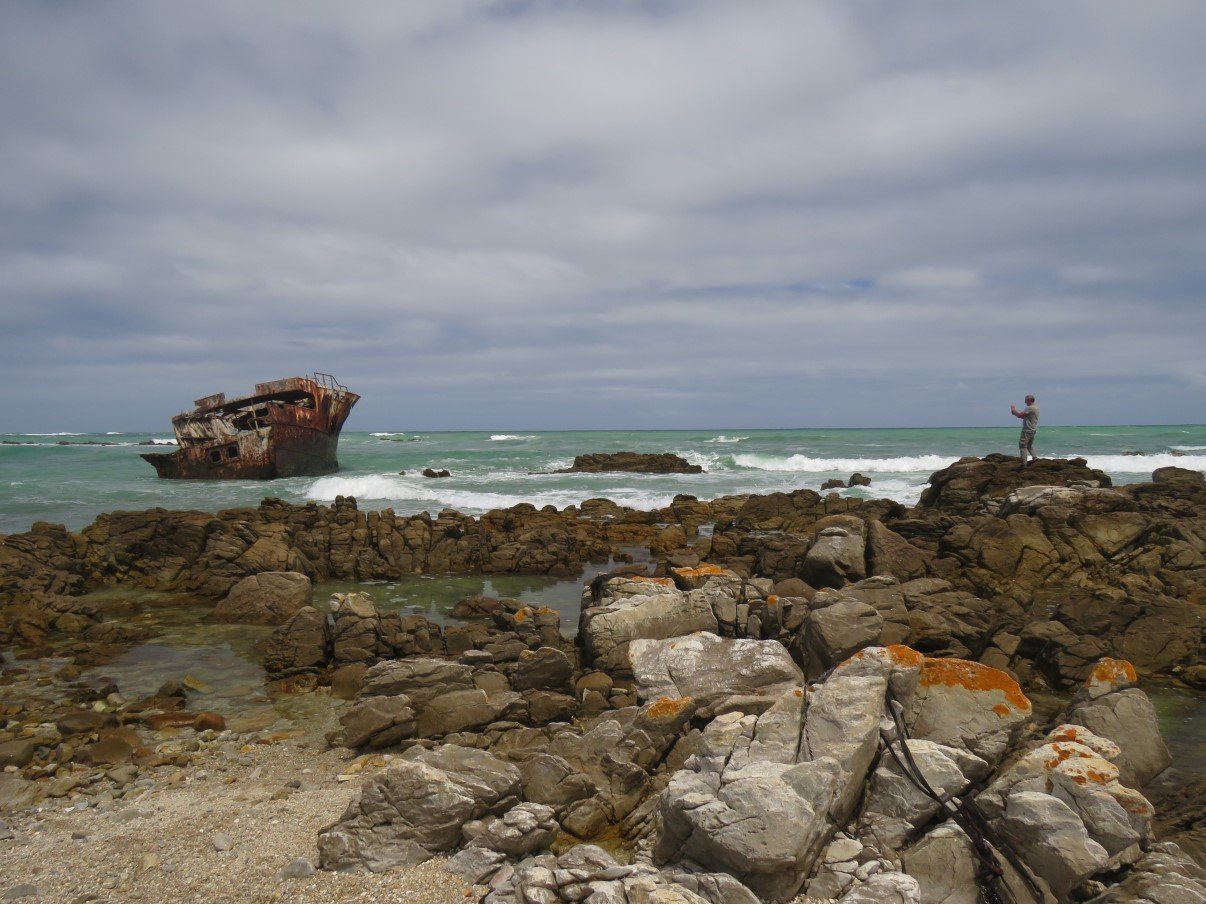
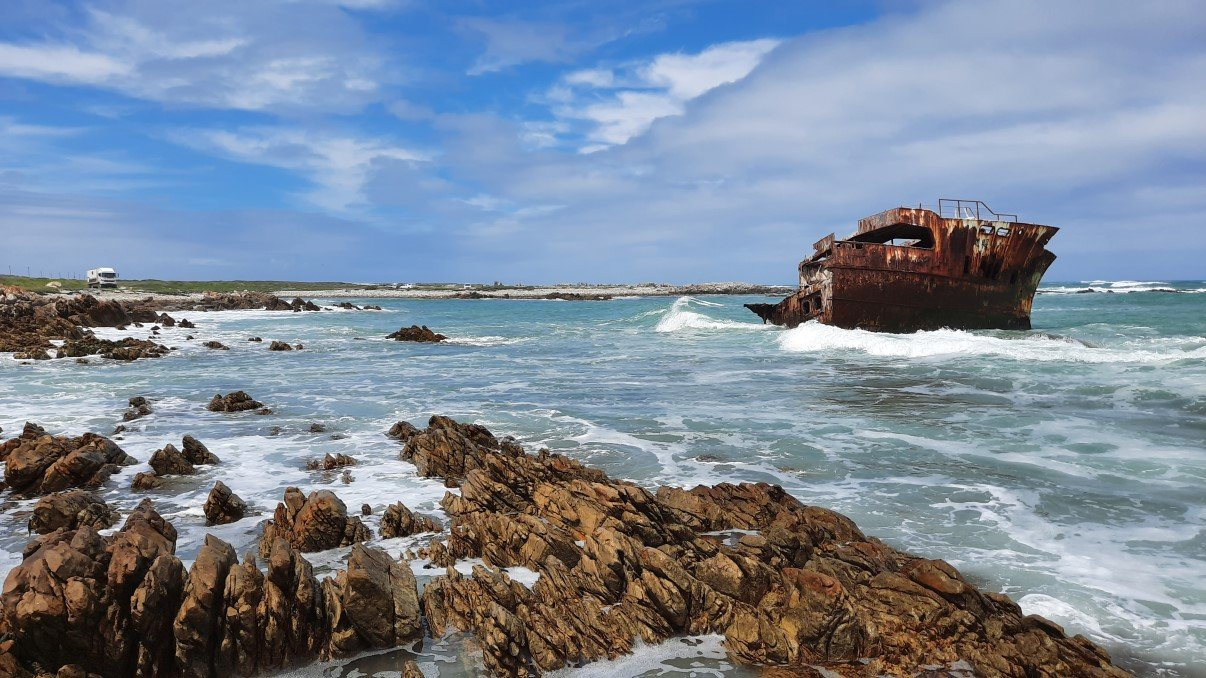
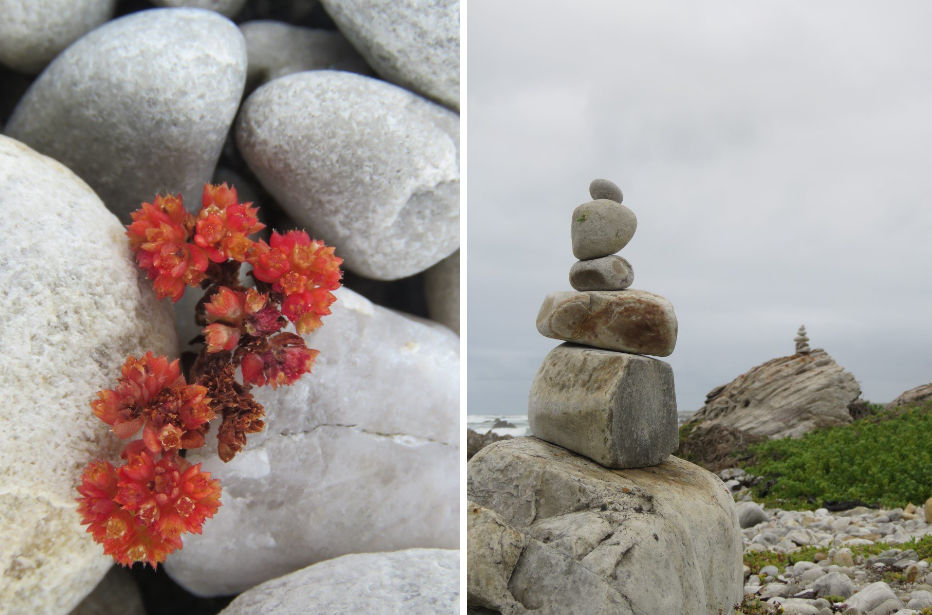
On our way out we stopped at the lighthouse but unfortunately- due to covid19- it was closed to the public.
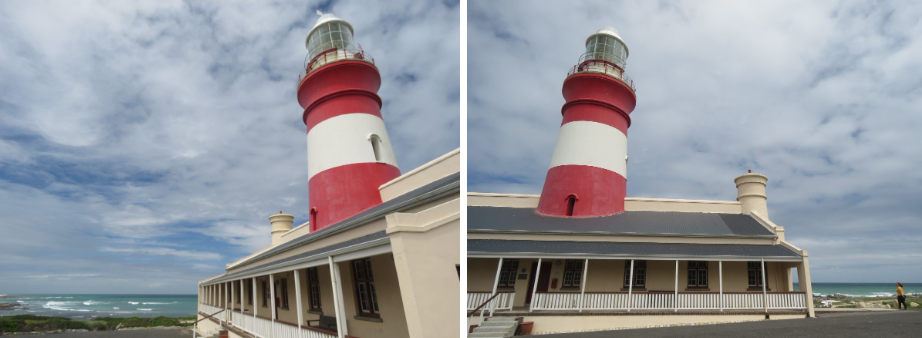
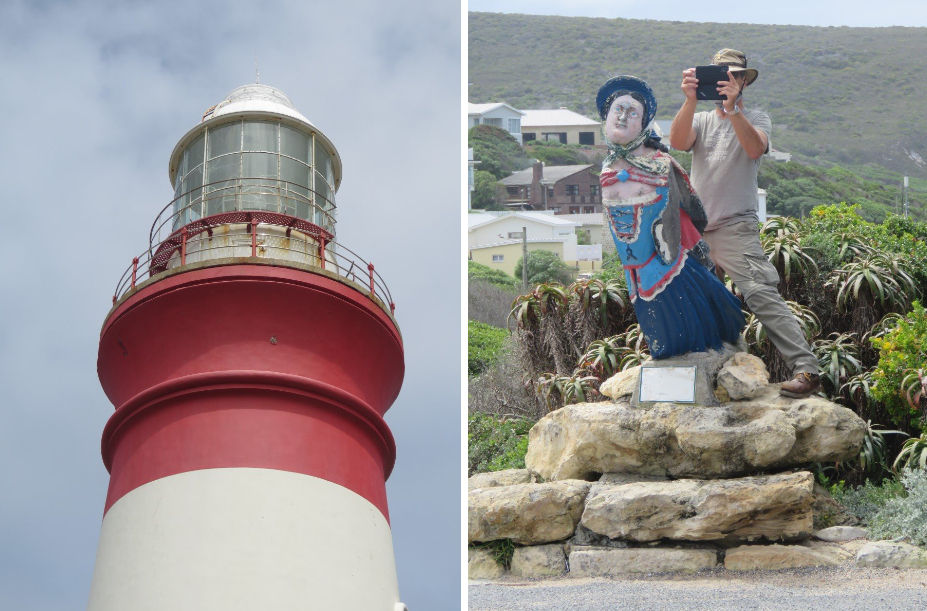
We left the park and drove to the Struisbaai Harbour for a proper fish and chips lunch while overlooking the activity in the little harbour. We had read that there is a resident stingray in the harbour that’s happy to be fed by tourists, but it wasn’t around when we were there. The colourful boats, populated by seagulls and cormorants, were bobbing on the water against the dark blue stormy sky, while at the end of the jetty fishermen were trying their luck. On the far end of the bay you could see the whitewashed houses of Arniston.
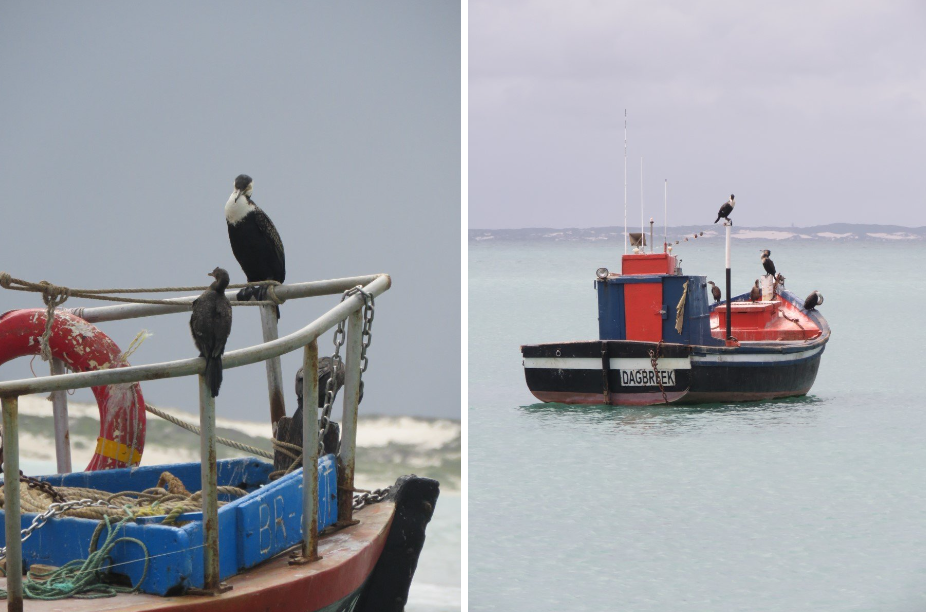
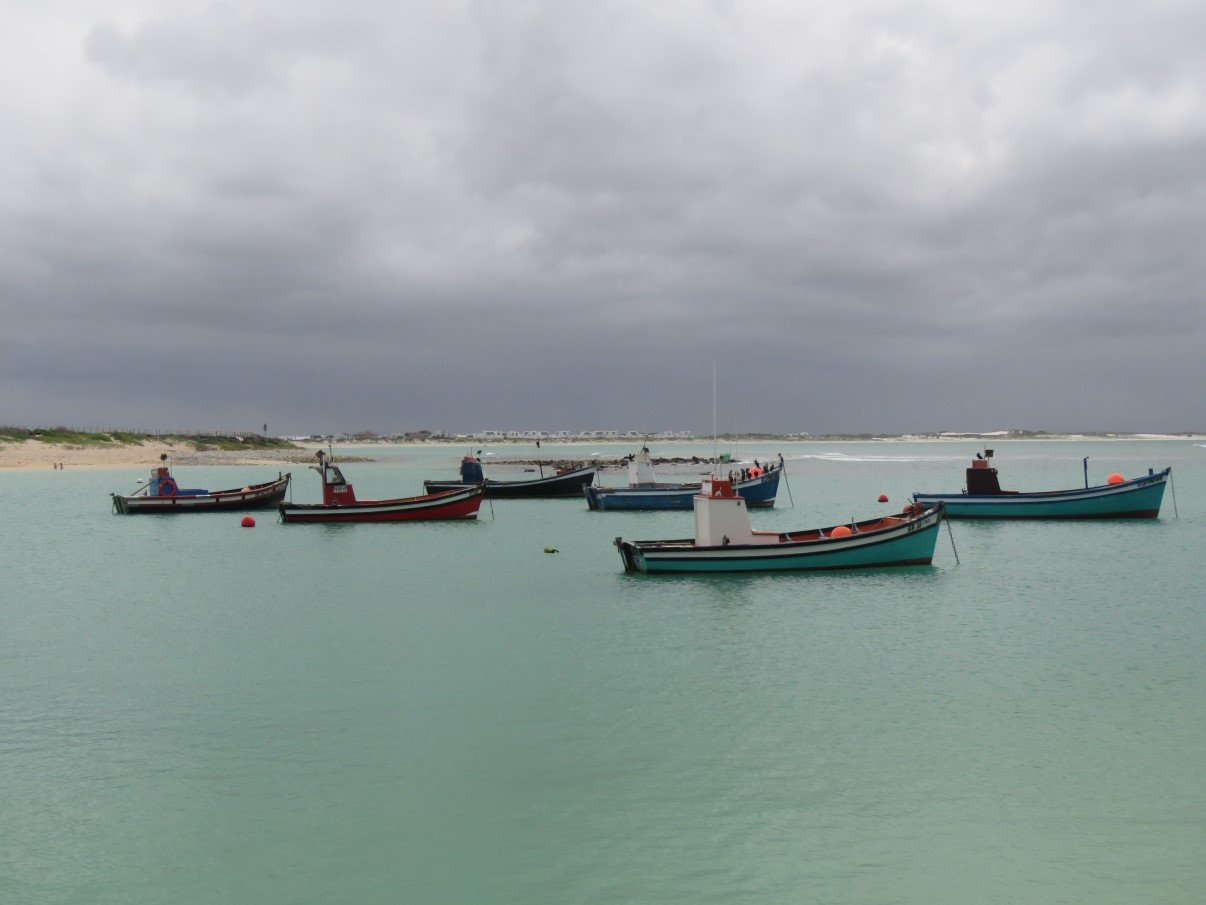
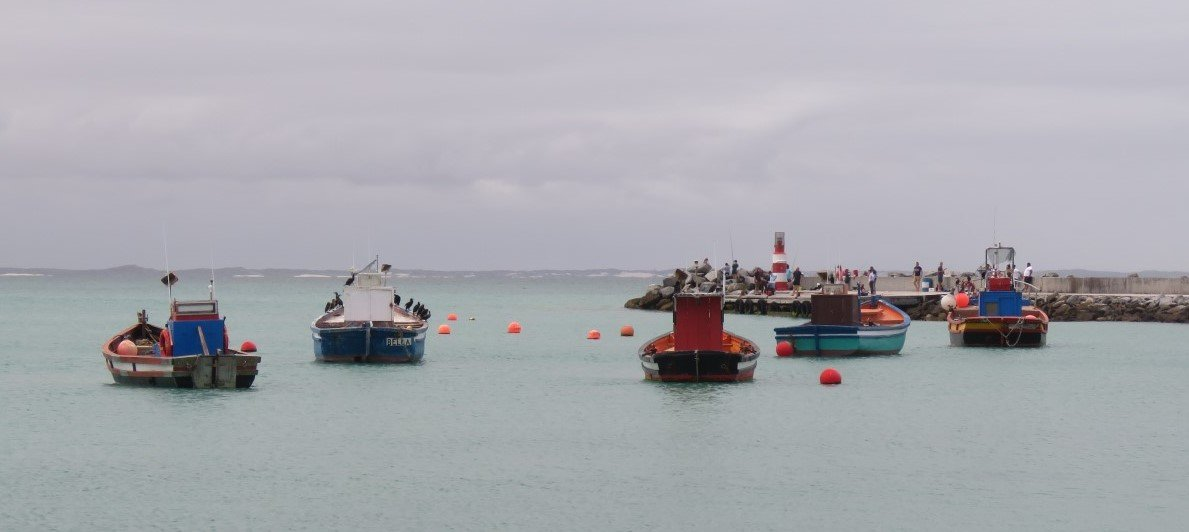
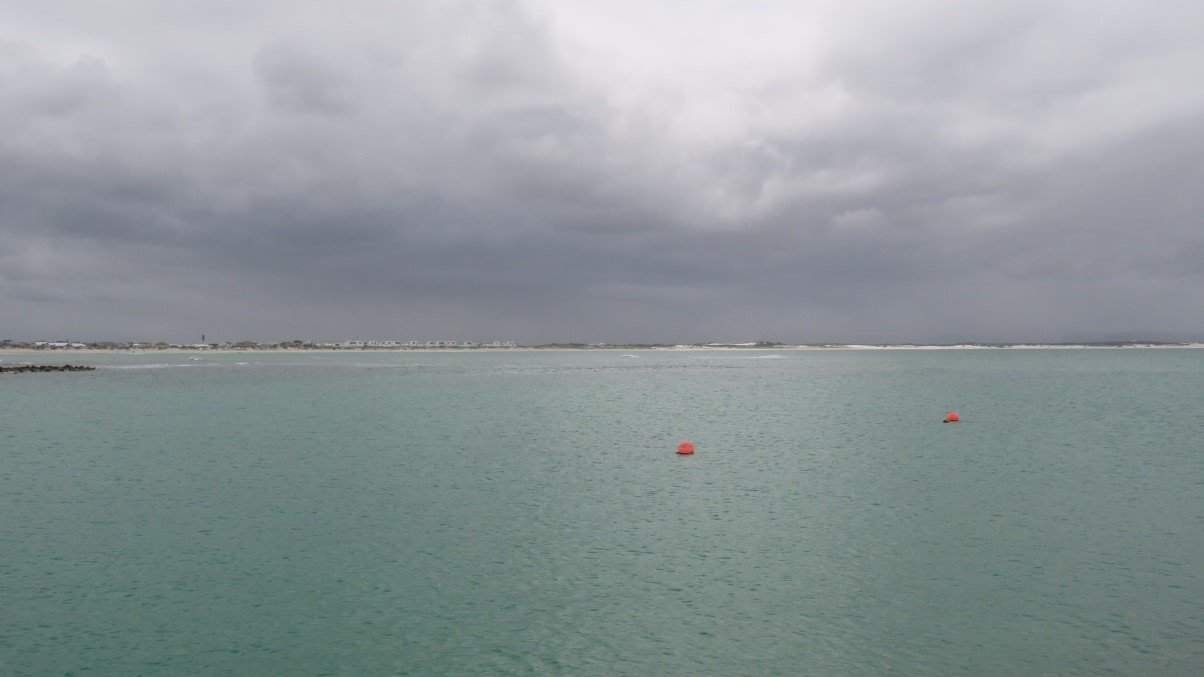
A little anecdote. Stefaan has a hat on which he collects badges and pins, but also bird feathers. Our grandchildren help him collect (when we see them) but sometimes demand “payment” (wanting to take a feather from the hat). So we need to “replenish” all the time. And it seems that that there are always volunteers to help. While we were waiting for our fish and chips order at the Struisbaai harbour, a man came up to us and handed Stefaan a handful of feathers with a story: he had been walking in the dunes and searching for a birds nest, when the parent bird had attacked him on the head and poo-ed on his shirt. So now Stefaan has a feather of the “attacking seagull” on his hat.
After lunch we took a slow drive back to Gansbaai via Elim, an historical Moravian Mission Station with its streets of typical white houses with thatched roofs. (we visited Wupperthal, another Moravian Mission Station, on our Cederberg trip).
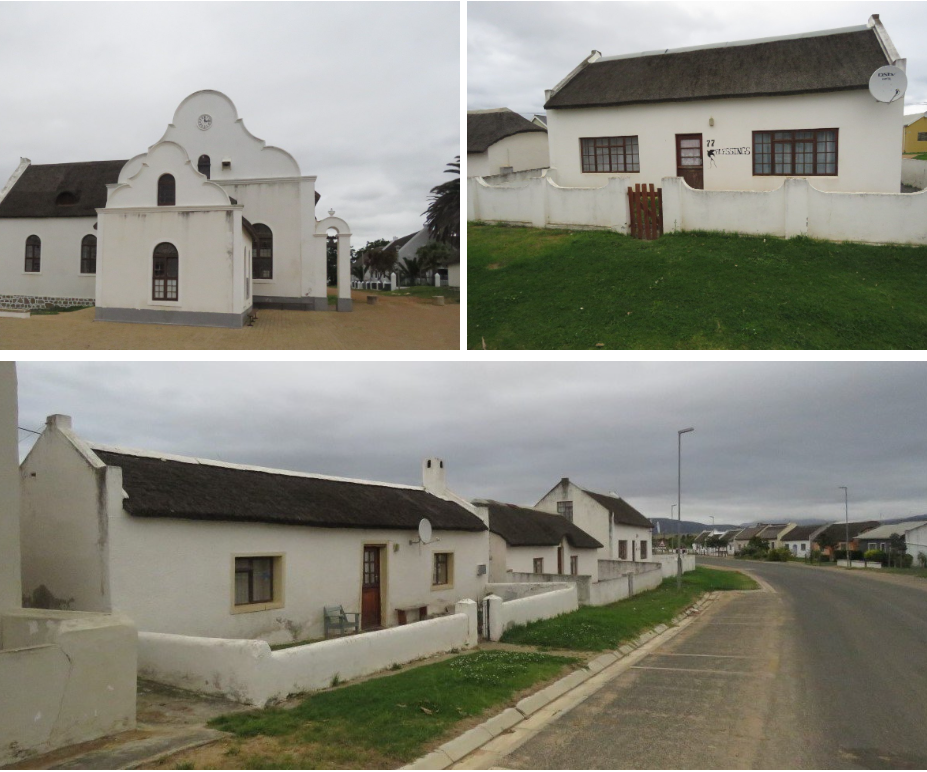
As our boat trip was planned for 3pm, we had most of the day to do something else and we decided to take (another) drive to the Danger Point lighthouse. Man… was that a little trip with big surprises!
First of all, we must have been hugely confused because we never put 2 and 2 together to realise that we would be driving to the same lighthouse as 2 days before (we presume that on this trip, we got onto the coastal road a much further away from the lighthouse and didn’t recognize it as being the same road).
After our morning coffee, we left Pearly Beach and seeing we had the time, decided to take the coastal route via Franskraal and Kleinbaai. At Kleinbaai we got out to admire the shark diving boats and the “Kings of the Sea” sculpture by Jenna Harris in the tiny harbour.
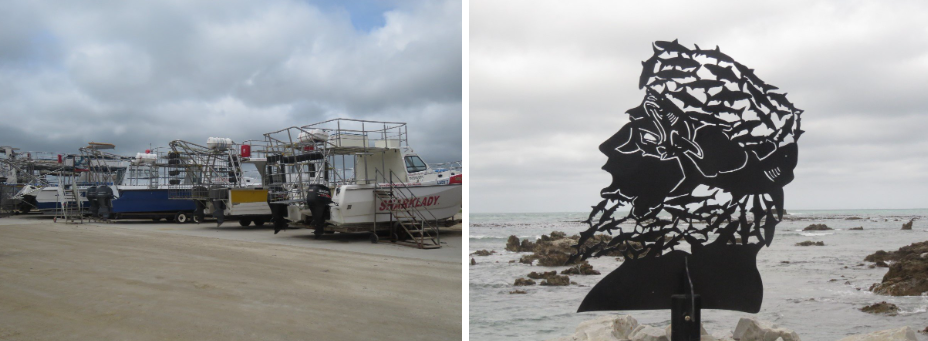
From the harbour we followed the coastal road till town ended and the road changed from tar to track. (The green arrow). Seeing that we have done a few dirt/4×4 tracks before and the track looked pretty ok, we kept on driving.
Until we hit a part of the road that looked really dodgy to me. (Later it seems that we got off the official 4×4 track on the split and got on the “beach/boulder path just below… the red arrow. The dodgy part where we got stuck is marked with X. Where the 4×4 trail changes to tar again (Kabeljou street) is where we had come from the north (Lord Robertson street) two days before).
Seeing that I very often feel quite uncomfortable in certain off-road situations with the truck, I decided to get out and walk that part of the road (at point X). When I was filming Stefaan negotiating this dodgy part on the track, I thought I would have a heart attack. The truck wobbled so much over the rocky surface that I was really scared it would just make one wobble too much and keel over.
Luckily Stefaan seems to have a better grip on the 4×4 capabilities of the truck and made it in one piece. I, on the other hand was a nervous wreck!!! Stefaan got out of Trokkie to recce the next part of the road and came to the conclusion that he wouldn’t be able to get the truck over that part. So now… we had to reverse.
Wisely I stayed out of the truck, partially for my own sanity and heart condition, partially so I could direct Stefaan how far he could (or could NOT) manoeuver in order to turn the truck around. Where we had a 47 point u-turn at Eselbank, I think we might have done double here! And then Stefaan had to negotiate the dodgy dip again! My second heart attack! Jeepers… this was really not good for my health!!!
But he made it (again) without tipping over and the rest of our return trip was smooth and uneventful. Unfortunately we weren’t able to make it to Danger Point this way!
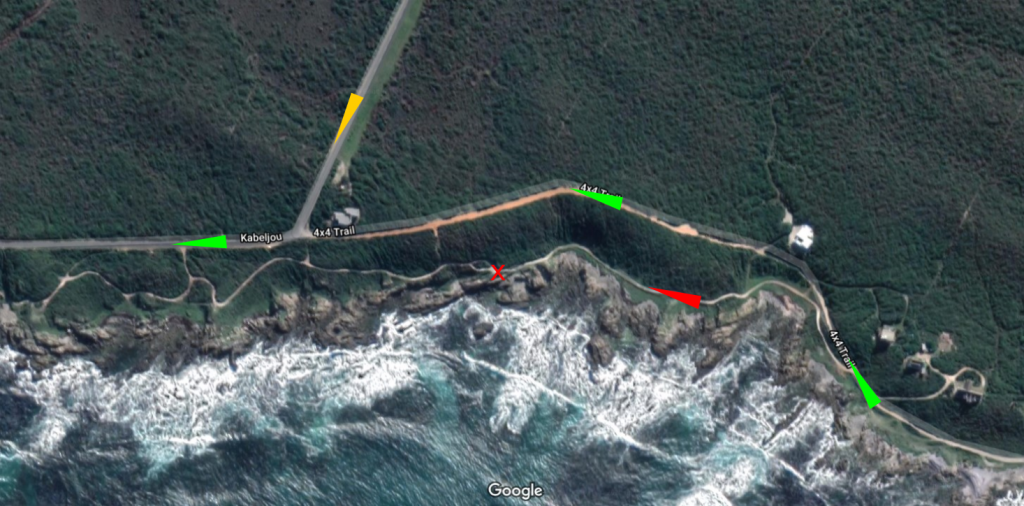
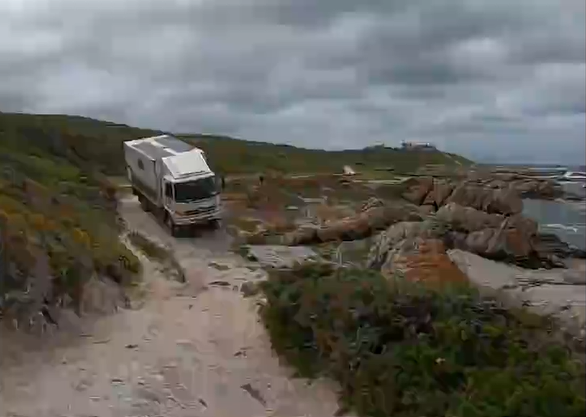
After this little hair raising trip (for me in any case) we continued to Gansbaai, parked ourselves in the little harbour, and waited till it was time for our boat trip.
We signed in and got our information before boarding. We left the harbour at full speed towards the Plaat where, according to the Ivanhoe crew, there were a few whales to be seen. Closing in to that part of the coastal waters, our guide pointed out where we could see the Klipgat Caves (which we planned to visit the following day – right on the top photo). Then we (or rather the crew) spotted the first whale. The captain throttled back the engines so we could slowly drift closer and see his massive body coming up for air and diving away again. When he seemed to get tired of us we sped up westwards towards another whale the crew was aware off. That turned out to be a little social party: a mommy and calf with a playing seal as company. They didn’t seem too upset with our presence and were happily moving around, popping up and blowing spray.
Although we came so much closer to these big creatures as what we’d seen them the previous day from the beach with binoculars, we’re still hoping that maybe one day we might actually see them breach and make a big splash!
When they eventually swam away into the sunset, it was our sign to do the same.
On our return trip however we had another surprise in store: an enormous flock of cormorants flying, diving and drifting onto the ocean just off our starboard side.
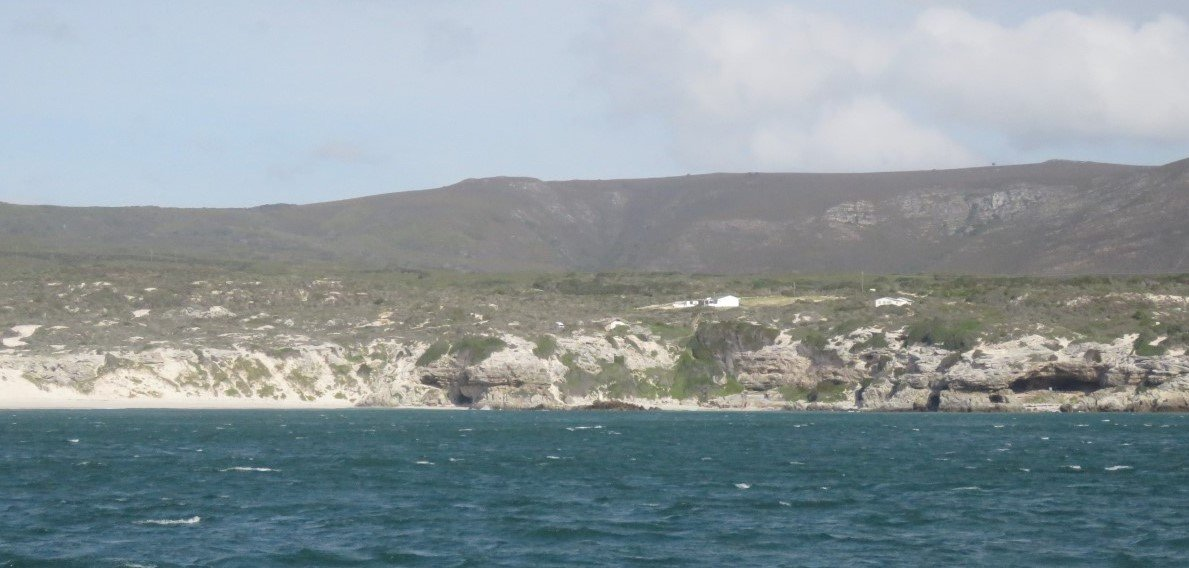
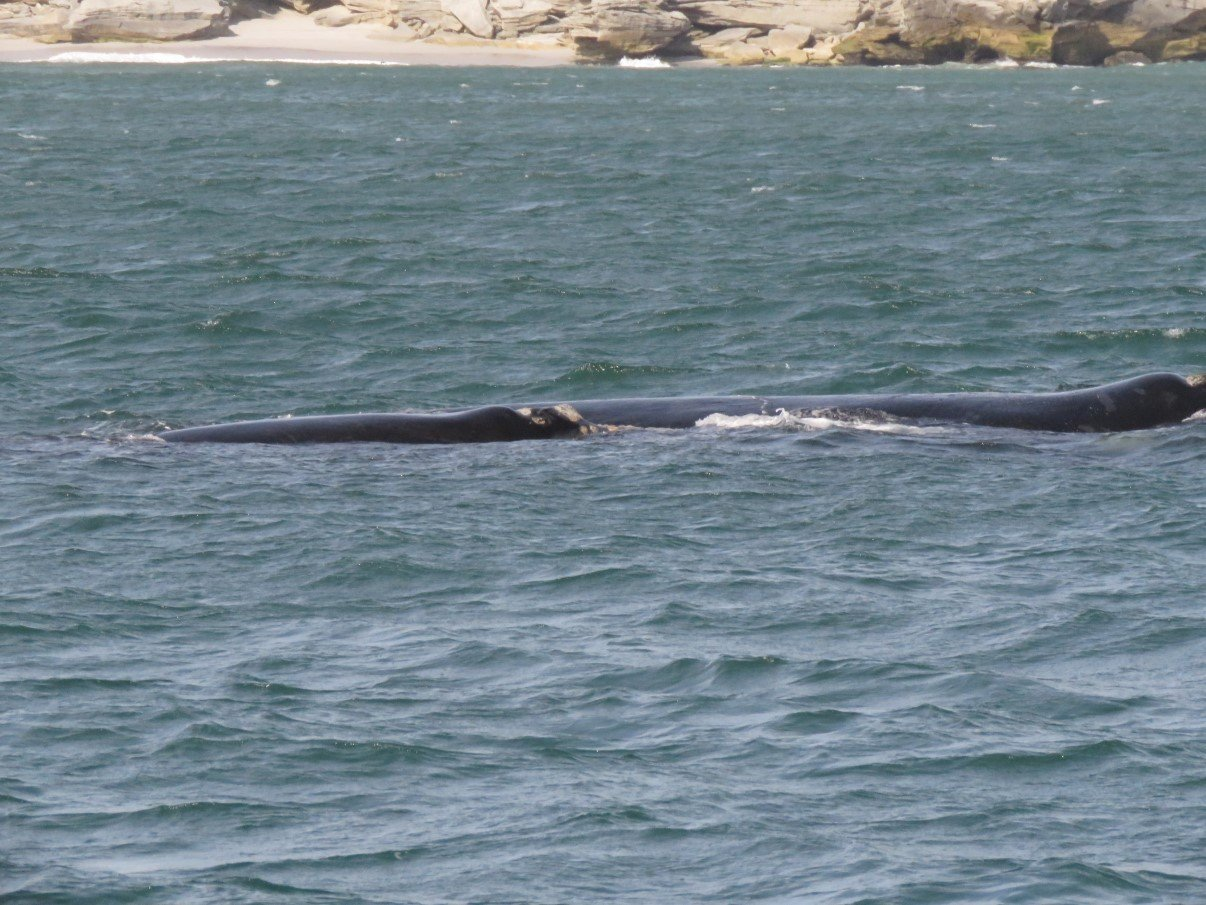
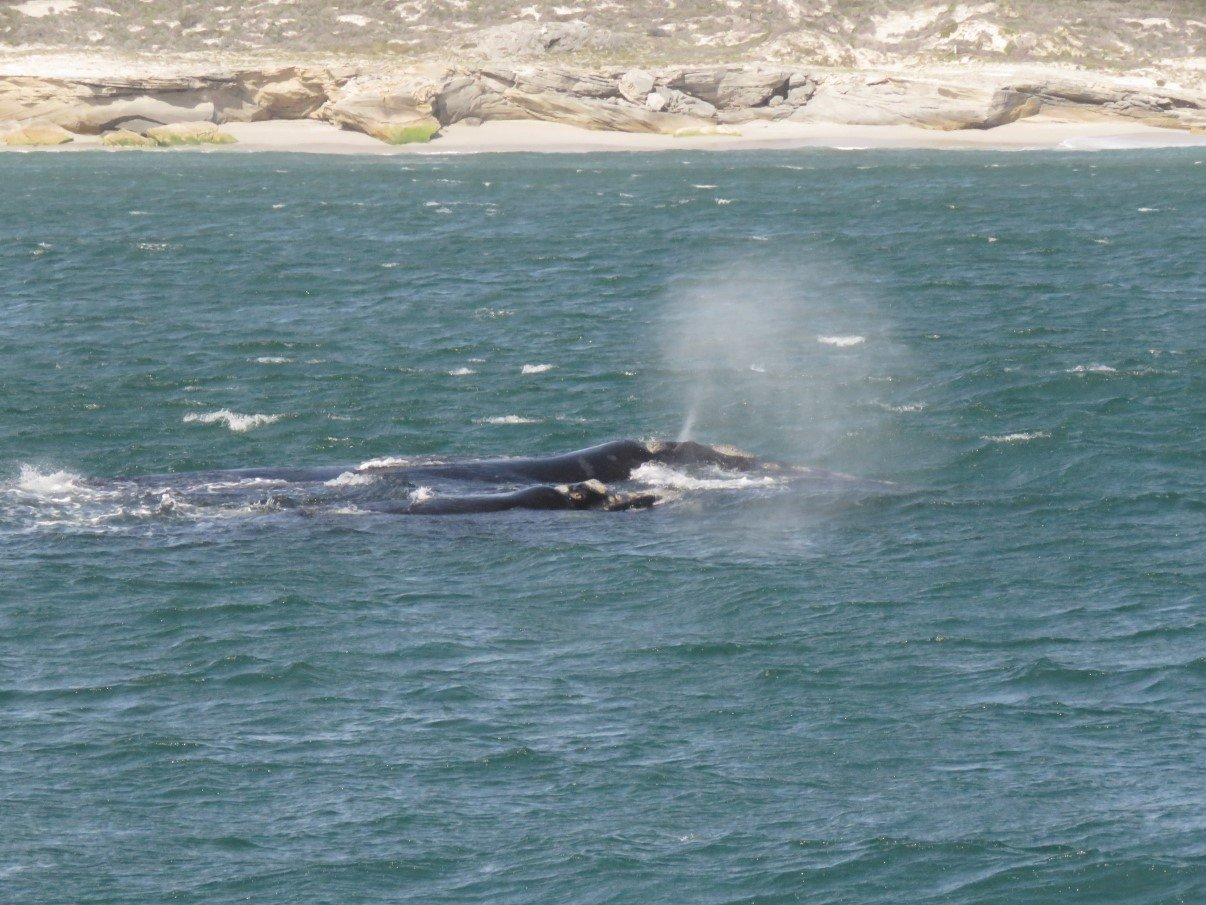
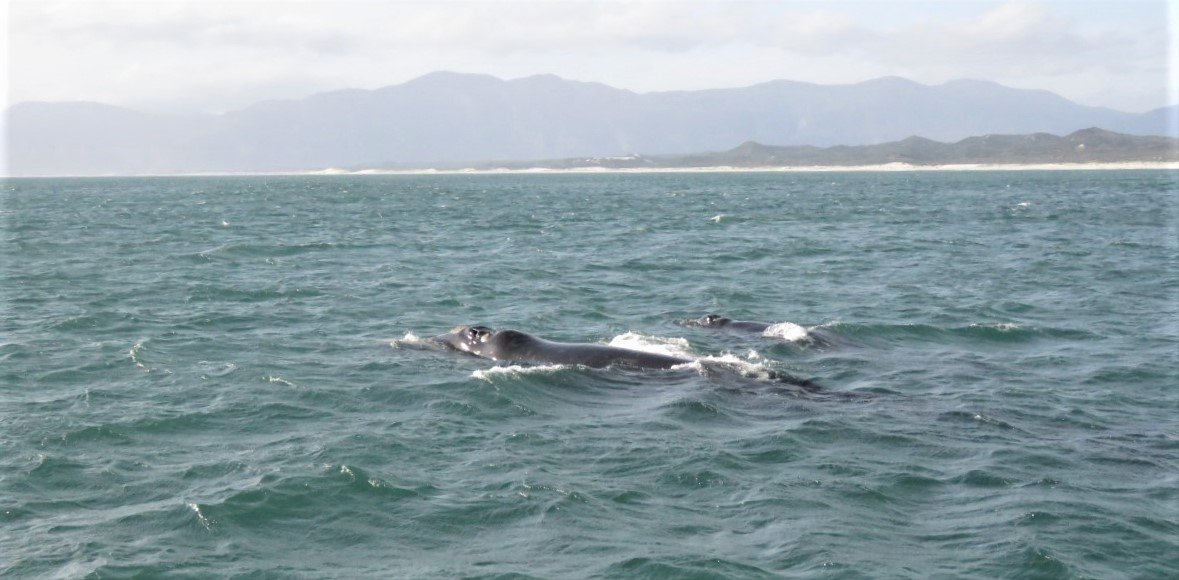

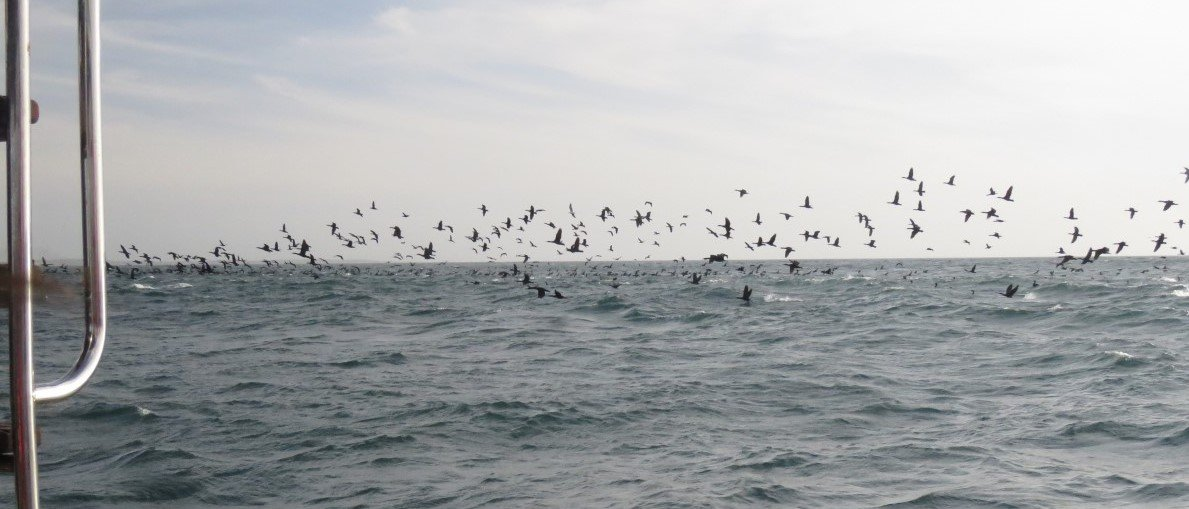
Although filming on the boat wasn’t really working out, we were lucky to see more whales a few days later at Blouberg Strand.
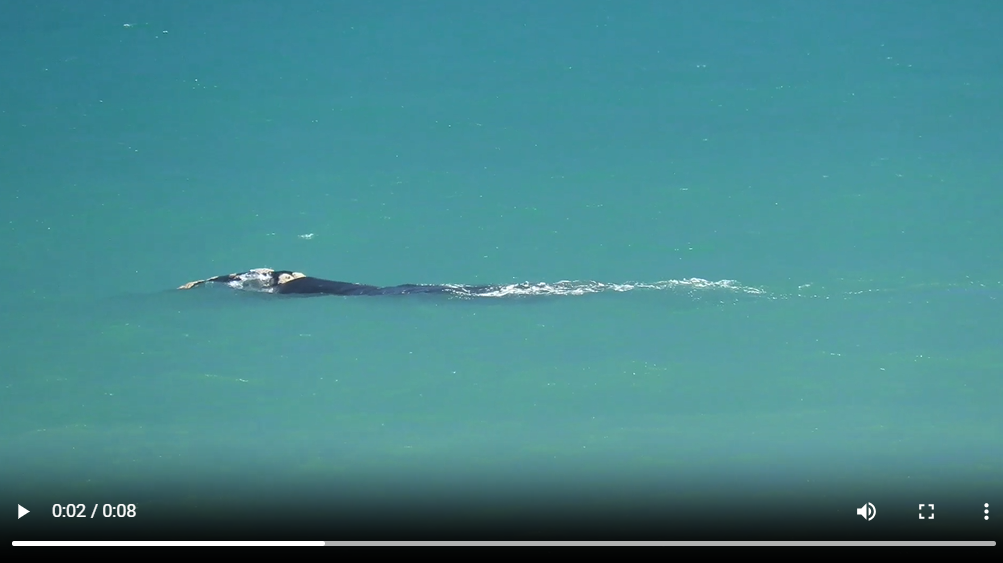
As it was already late afternoon when we arrived back into Gansbaai harbour, we decided to stay put for the night, before heading inland the following day.
Our last stop on the Whale Coast the next morning was a visit to the Klipgat Caves (which we had seen from the boat the day before).
We parked Trokkie on a small parking area and followed a path down the hill and from one of the vantage points we could see the caves. After a while however we weren’t sure anymore if this was an official walking path because it regularly disappeared into nothingness and we had to look for another way. From our rocky climb however we saw other hollow spaces that looked like caves and down there in the surf we saw a couple of seals just lazying about and drifting on the rythm of the waves. Eventually we crawled our way over rocks and boulders to the cave… where we saw people coming from another side with steps and boardwalks… obviously the official tourist walk.
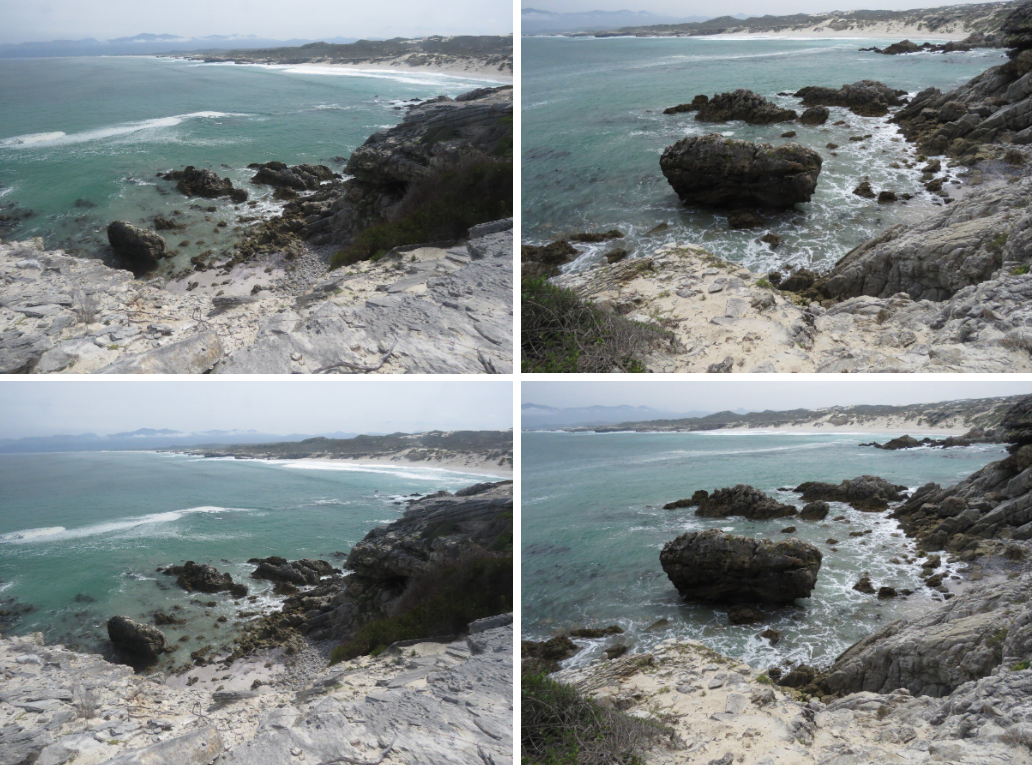
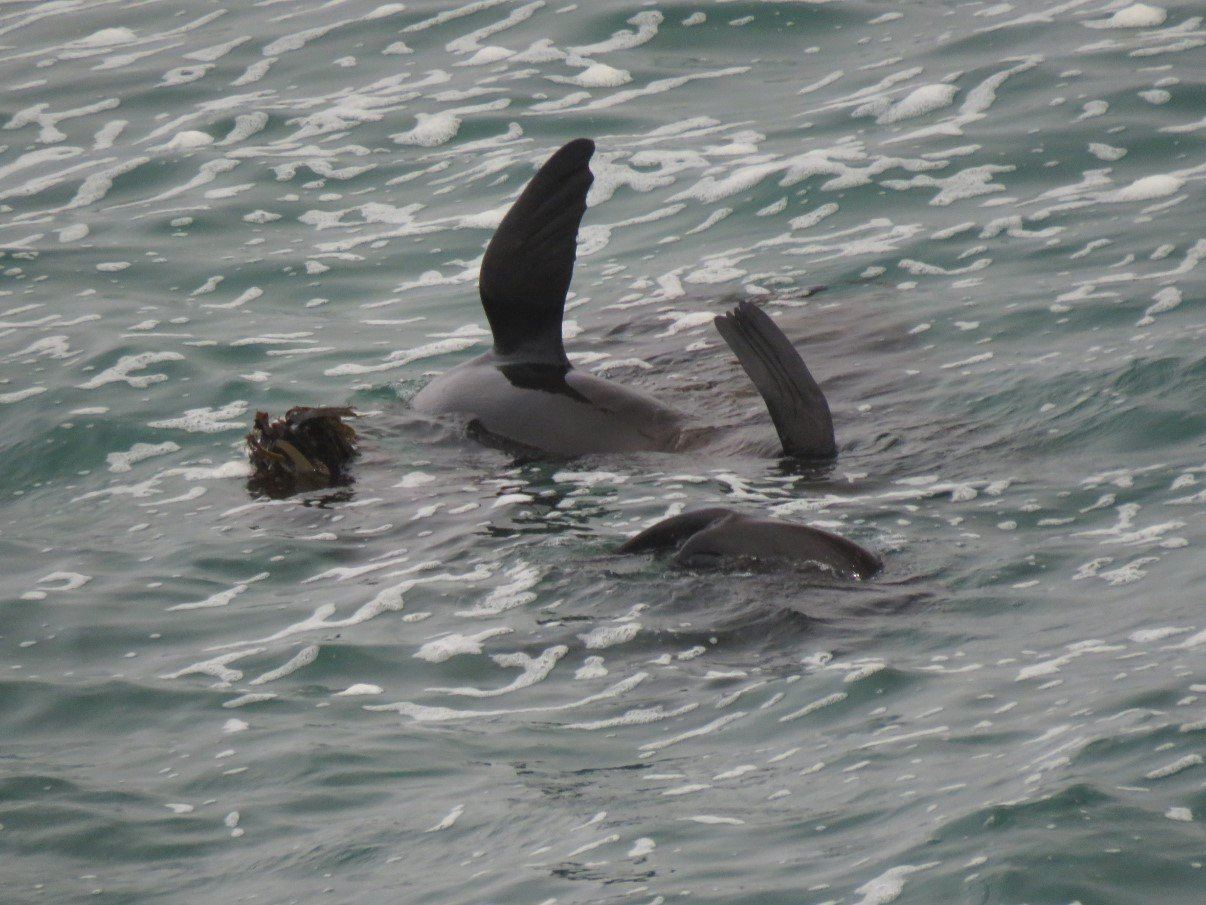
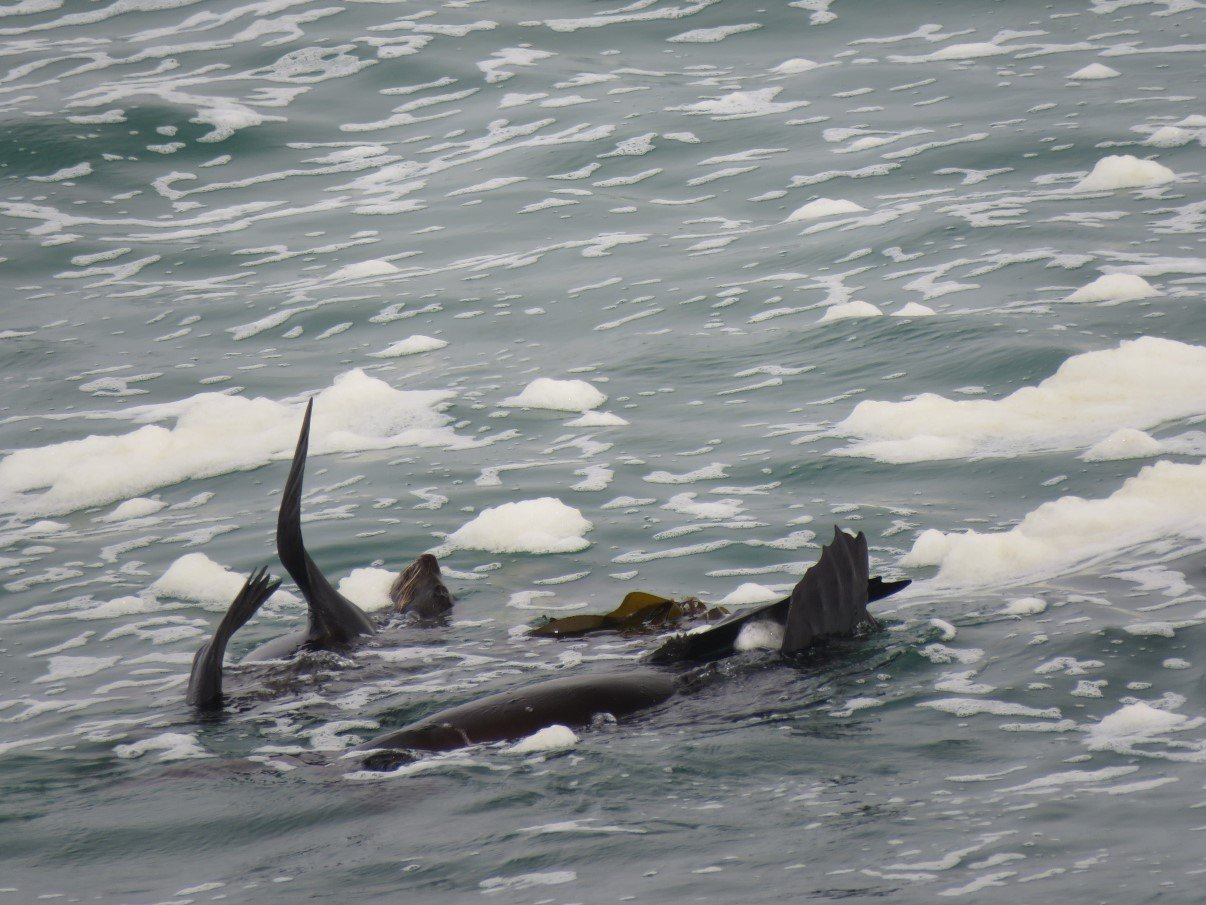
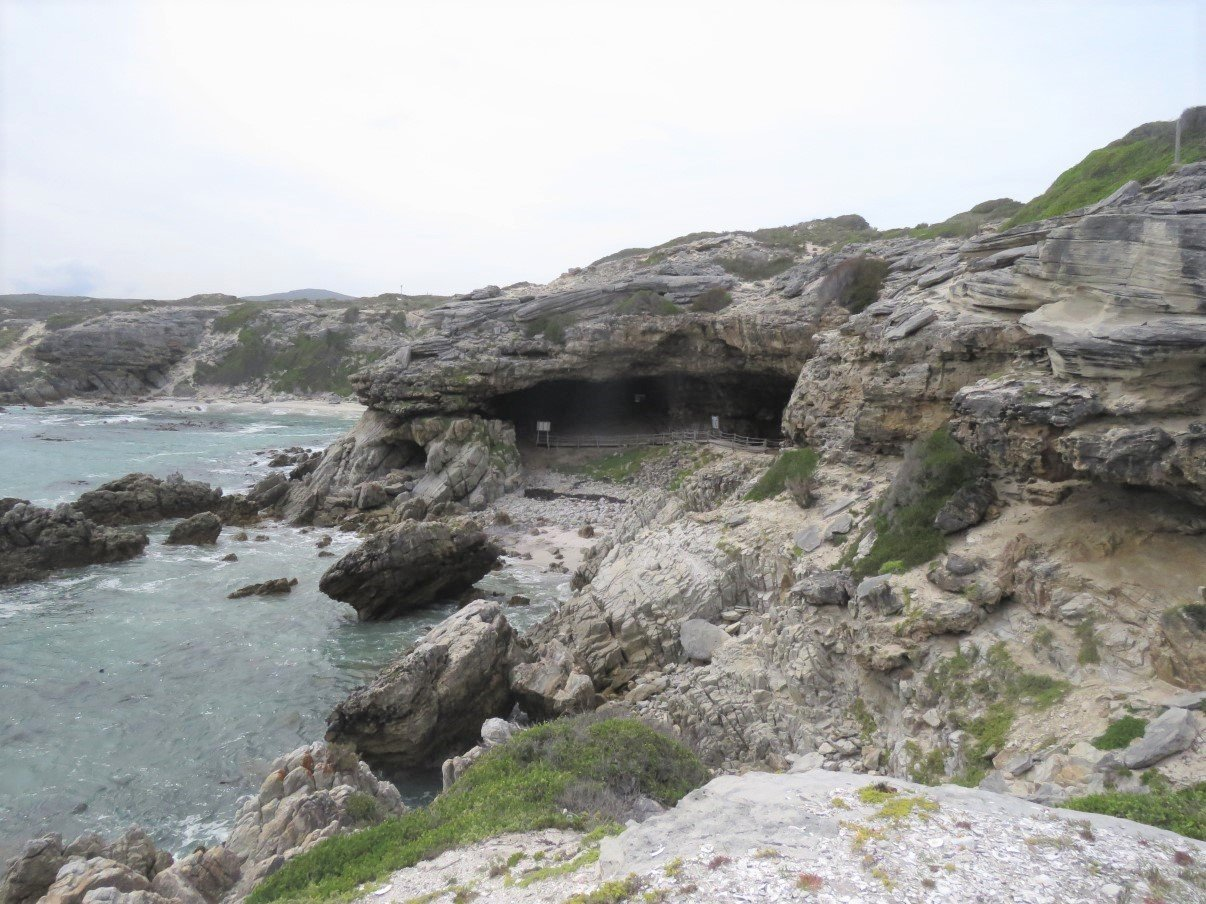
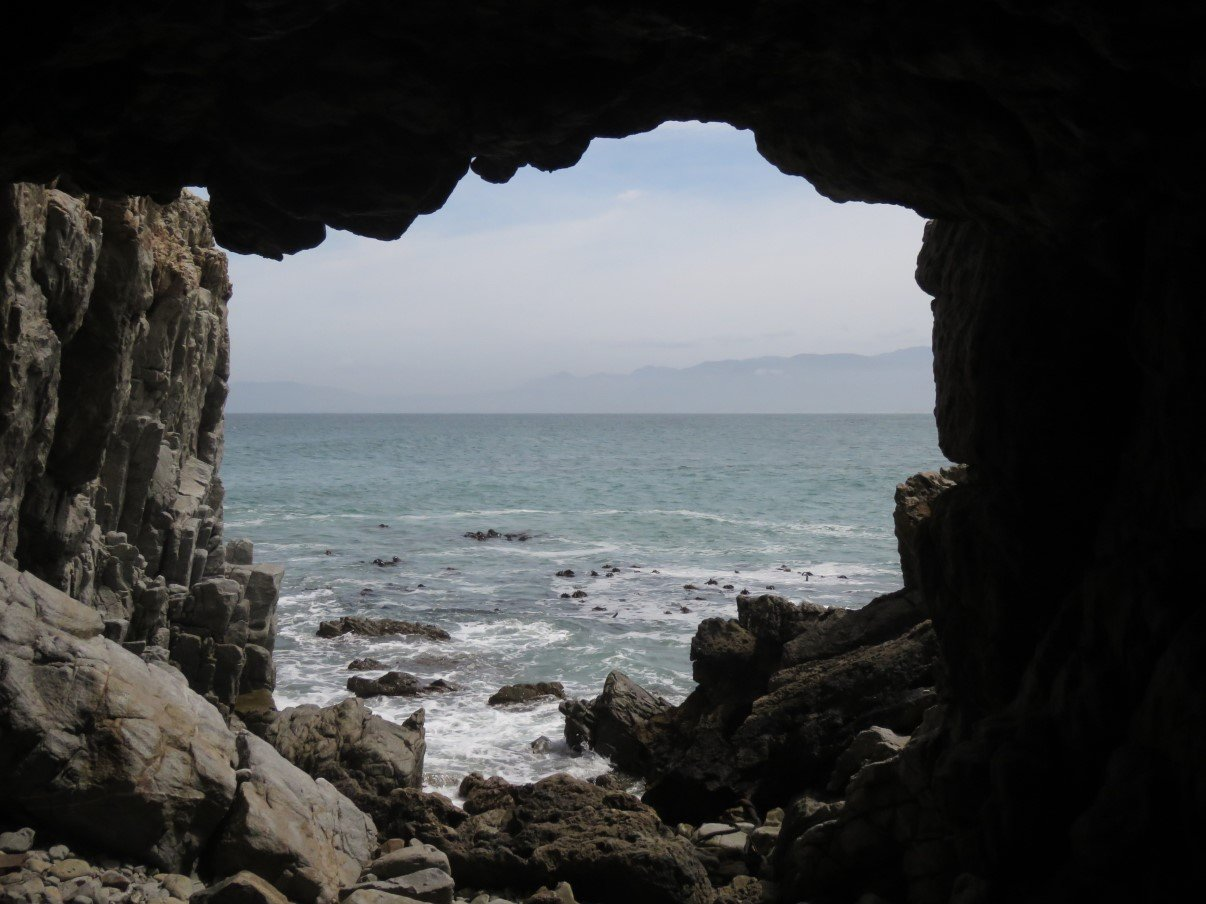
Klipgat closed off our Whale Coast trip and we headed inland towards Genadendal, another Moravian Mission Station.
For more photos, clips and videos follow us on


Whale Coast